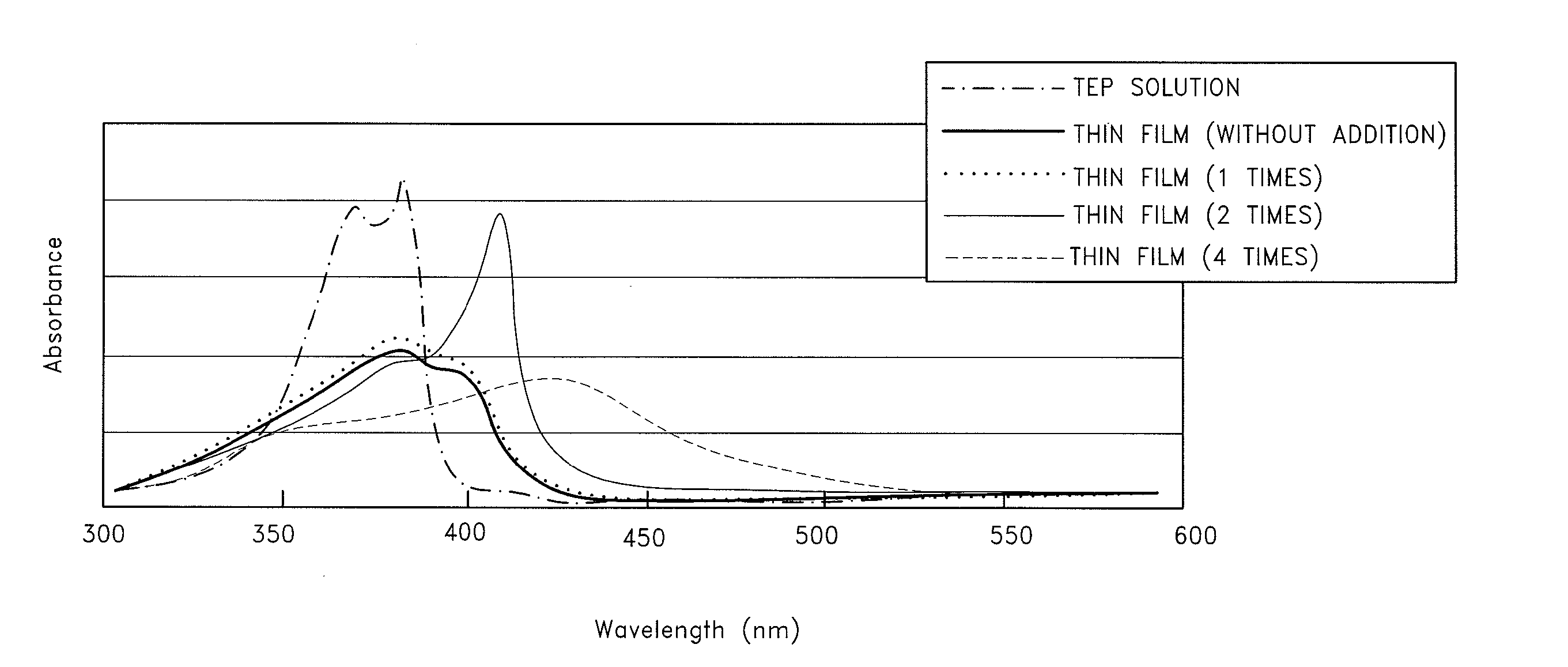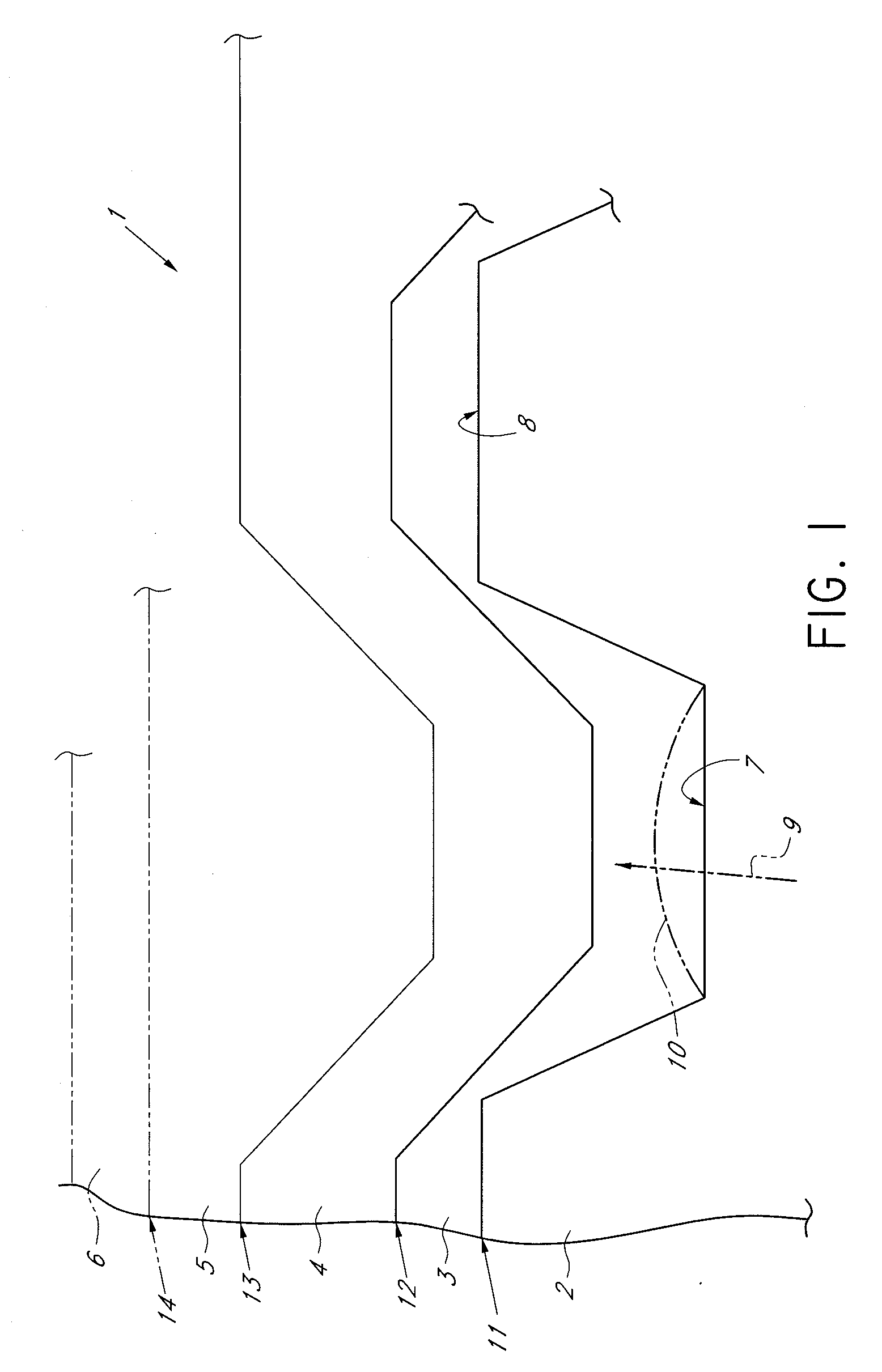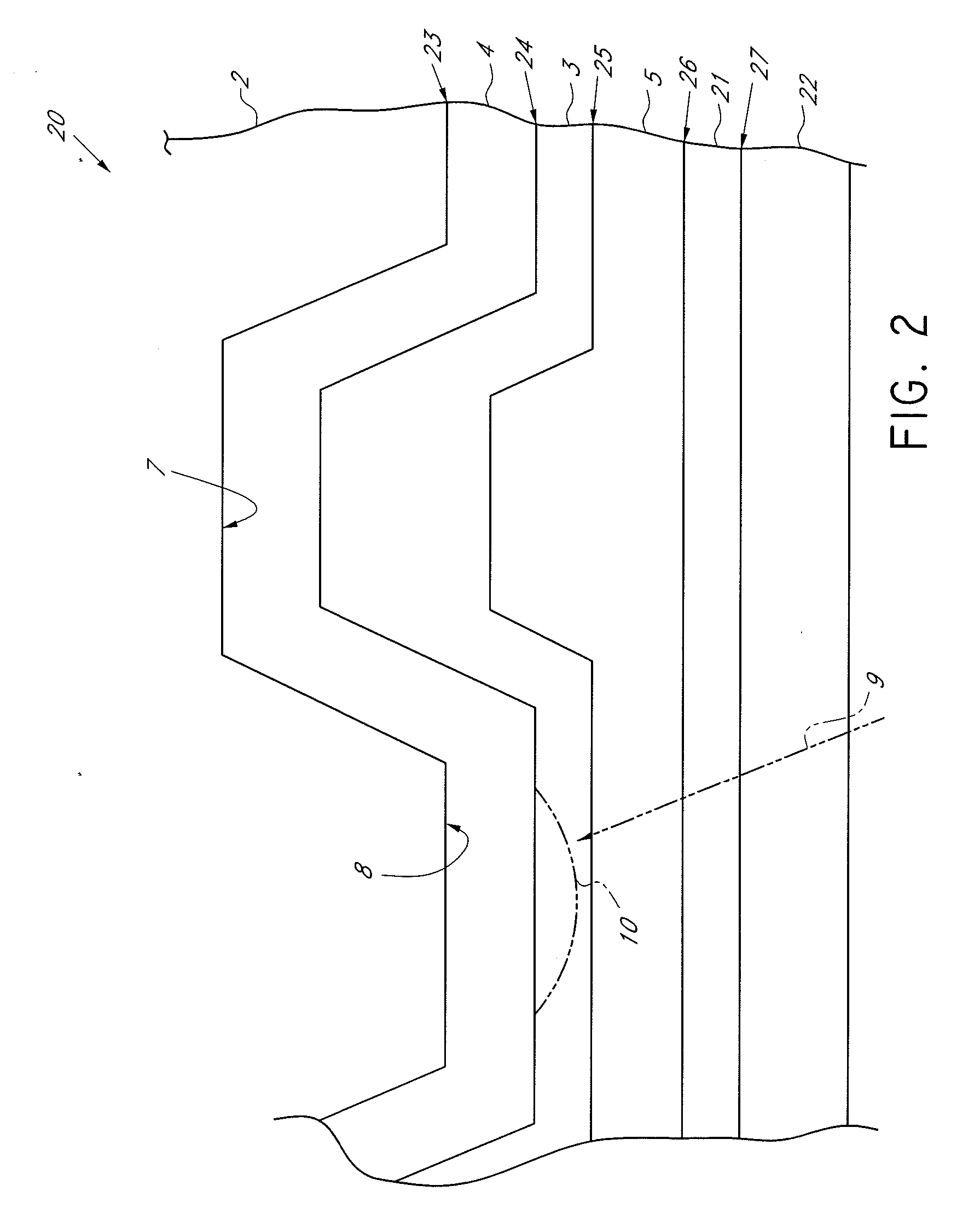Optical information recording medium and method of producing the same
a technology of optical information and recording medium, which is applied in the field of optical information recording medium, can solve the problems of inability to obtain a proper refractive index of dye thin film, inability to achieve satisfactory practicability of high-to-low recording commercial products, etc., to achieve excellent optical properties, high refractive index, and easy generation of differences in refractive index
- Summary
- Abstract
- Description
- Claims
- Application Information
AI Technical Summary
Benefits of technology
Problems solved by technology
Method used
Image
Examples
example 1
[0097] First, 2.0 g of a monomethine cyanine compound (Compound I) represented by formula [9] below was fed in a 100-mL flask. Phosphoric acid was then added in an amount of 0 times (without addition), 0.5 times (178 mg) (more specifically, the molar ratio of H+ to Compound I was 0.5 (1 molecule of Compound I : 0.5 hydrogen ion H+), and this also applies to the following cases), 1 times (357 mg), 2 times (714 mg), or 4 times (1,428 mg) the amount of Compound I. Furthermore, 2,2,3,3-tetrafluoro-1-propanol (TFP) was added to each flask so that the total volume reached 100 mL, and the mixture was sufficiently stirred to dissolve the compound. Thus, monomethine dye compositions each containing Compound I in a concentration of 20 g / L were prepared.
[0098] Subsequently, 5 mL of each solution of the above monomethine dye composition was dripped to a 1,000-mL volumetric flask, and 2,2,3,3-tetrafluoro-1-propanol was then added to the flask so that the total volume reached 1,000 mL. The mixtu...
examples 2 to 5
[0110] Monomethine cyanine dyes (Compounds II, III, IV, and V) represented by formulae [12], [13], [14], and [15], respectively, were used instead of Compound I in Example 1. As in the above-described case of Compound I, phosphoric acid was added in an amount of 1 times or 2 times the amount of each compound to prepare solutions. Each of these solutions was applied on a single plate by spin coating as in Example 1. The spectrum of each thin film of Compound II, III, IV, or V formed on the single plate was measured. FIGS. 7, 8, 9, and 10 show the results of Compounds II, III, IV, and V, respectively.
[0111] Referring to the absorption spectra of thin films on the single plates in FIGS. 7 to 10, when the absorption spectrum shown by the thin solid line (thin film (with addition of phosphoric acid in an amount of 2 times the amount of compound)) was compared with that shown by the dotted line (thin film (with addition of phosphoric acid in an amount of 1 times the amount of compound)),...
example 6
[0112] First, 2.0 g of a monoazamethine cyanine compound (Compound VI) represented by formula [16] below was fed in a 100-mL flask. Phosphoric acid was then added in an amount of 0 times (without addition), 0.5 times (160 mg) (more specifically, the molar ratio of H+ to Compound VI was 0.5 (1 molecule of Compound VI 0.5 hydrogen ion H+), and this also applies to the following cases), 1 times (320 mg), 2 times (640 mg), or 4 times (1,280 mg) the amount of Compound VI. Furthermore, 2,2,3,3-tetrafluoro-1-propanol (TFP) was added to each flask so that the total volume reached 100 mL, and the mixture was sufficiently stirred to dissolve the compound. Thus, monoazamethine dye compositions each containing Compound VI in a concentration of 20 g / L were prepared.
[0113] Subsequently, 5 mL of each solution of the above monoazamethine dye composition was dripped to a 1,000-mL volumetric flask, and 2,2,3,3-tetrafluoro-1-propanol was then added to the flask so that the total volume reached 1,000 ...
PUM
 Login to View More
Login to View More Abstract
Description
Claims
Application Information
 Login to View More
Login to View More - R&D
- Intellectual Property
- Life Sciences
- Materials
- Tech Scout
- Unparalleled Data Quality
- Higher Quality Content
- 60% Fewer Hallucinations
Browse by: Latest US Patents, China's latest patents, Technical Efficacy Thesaurus, Application Domain, Technology Topic, Popular Technical Reports.
© 2025 PatSnap. All rights reserved.Legal|Privacy policy|Modern Slavery Act Transparency Statement|Sitemap|About US| Contact US: help@patsnap.com



